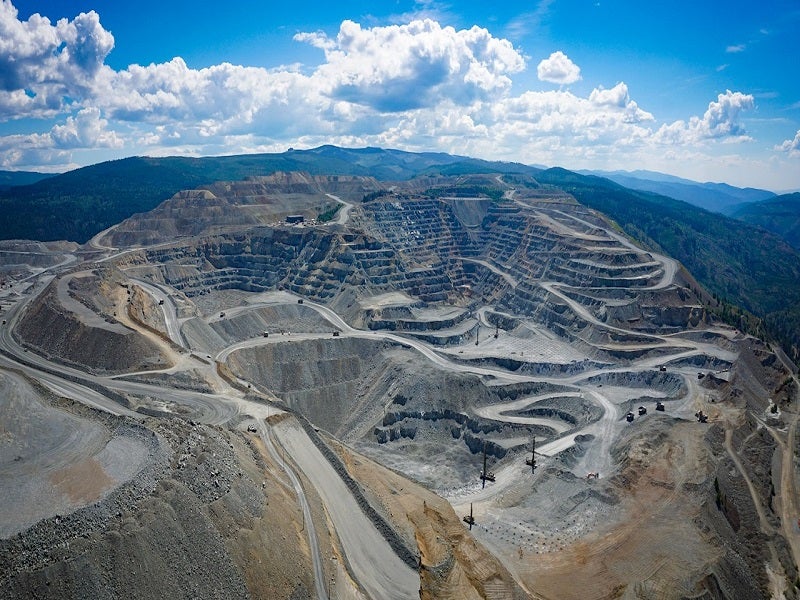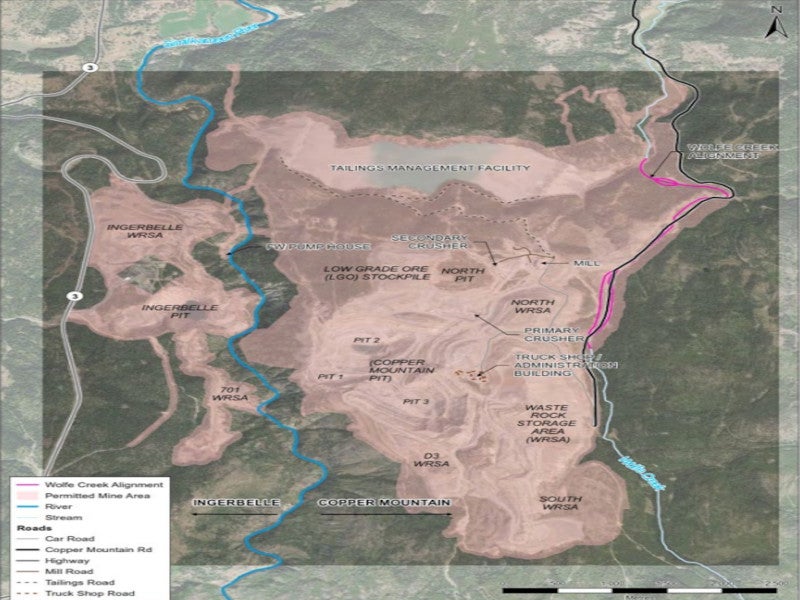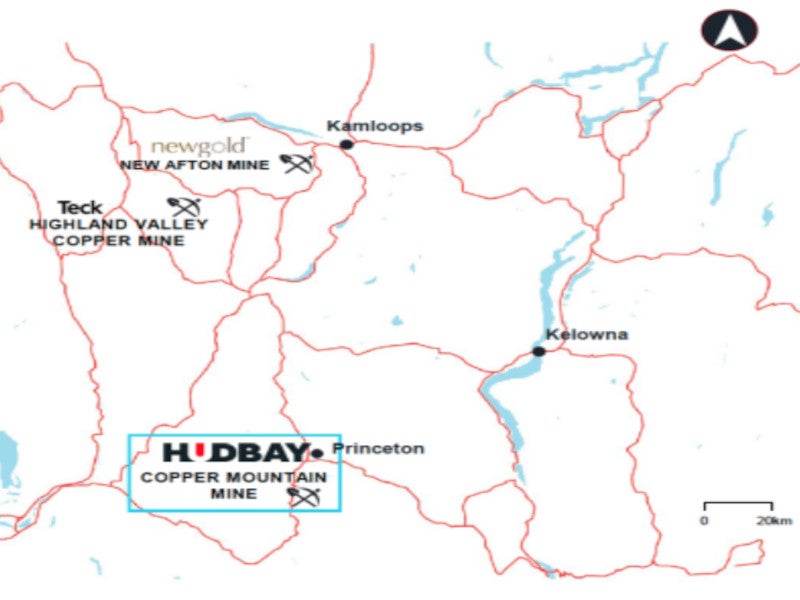The Copper Mountain project is an open-pit mine located in Princeton, British Columbia (BC), Canada. Hudbay owns 75% of the mine, with the remaining 25% owned by Mitsubishi Materials.
Technology solutions provider, ABB has expanded its presence in the transition towards fully-electric mining operations by securing a contract to provide a comprehensive trolley assist system for open-pit haul trucks to Copper Mountain Mining (CMMC) in Canada.
Mitsubishi and CMMC signed a memorandum of understanding in September 2008, under which Mitsubishi is also developing the project and entered definitive agreements in July 2009.
Under the agreements, Mitsubishi acquired a 25% stake in the Copper Mountain project in May 2010. In addition, Mitsubishi provided a $250m loan, and agreed to buy all copper concentrate from the mine.
Mining operations commenced in March 2011 and the mine was officially inaugurated in August the same year.
Location
The Copper Mountain project is situated 15km south-west of Princeton, BC, Canada.
It covers approximately 18,000 acres of mining land held under a combination of 135 crown grants, 132 mineral claims, 14 mining licences, eight cell mineral claims, and 12 fee simple lots.
Reserves
The proven and probable mineral reserves are estimated to be 367 tons (t) grading 0.25% copper, 0.12g/t gold and 0.69g/t silver as of December 2023.
Geology and mineralisation
The deposit at the project site is classified as an alkali porphyry copper deposit with gold admixture.
It is part of the northerly trending Mesozoic tectonostratigraphic terrane known as Quesnellia. The major rock formation of Quesnellia is the late Triassic Nicola group.
The Nicolo group rocks have a stratigraphic thickness of approximately 7.5km and form a 25km-wide band extending from the Canada-US border northwards to beyond Kamloops Lake.
The Copper Mountain alkalic porphyry copper-gold camp exists in the eastern volcanic belt of the Nicolo Group.
The copper-gold mineralisation at Copper Mountain occurs in a north-westerly trending belt of Nicola Group rocks, approximately 5km long and 2km wide. The mineralisation is temporally and spatially associated with the Lost Horse Intrusive Complex.
Mining method at Copper Mountain project
The Copper Mountain project is developed using conventional open-pit mining methods involving blast hole drilling, blasting, shovel loading, and truck haulage.
The remaining mining life is estimated at 21 years as of December 2023.
Mining is conducted in two areas, namely the Copper Mountain Pits (currently in operation) and New Ingerbelle. A low-grade stockpile is also maintained for reclamation during the later part of the mine life.
The current mining fleet consists of three electric shovels, one diesel shovel, 28 haul trucks of 220t capacity, three electric production drills, two diesel production drills, and related ancillary equipment.
Ore processing
The run-of-mine ore is directly dumped into the primary gyratory crusher.
The ore crushed in the primary crusher is transported to the secondary crusher, where it is combined with the screen undersize and conveyed to the semi-autogenous grinding (SAG) feed stockpile.
The SAG discharge is screened via a single-deck vibratory screen with 15mm apertures. Screen oversize is directed to the pebble-crushing circuit while the undersize is sent to the SAG transfer pump box.
The discharge-screen undersize from the SAG transfer pump box is pumped to a splitter box, distributing the slurry to three ball mill circuits.
The ball mill circuits produce a flotation feed with a nominal P80 of 150µm.
The flotation circuit comprises three cyclone overflow streams that are combined and treated with mineral collectors and frother.
The bulk flotation area includes ten rougher cells, two rougher-scavenger cells, two first-cleaner columns, one first-cleaner column, three direct flotation reactor second cleaners, five cleaner-scavenger cells, a regrind ball mill, and regrind flash-flotation cells.
The copper-concentrate product is directed to a high-rate thickener.
The thickened concentrate is then pumped into an agitated-concentrate stock tank before undergoing filtration.
Two pressure filters dewater the copper concentrate to <9% moisture and the filtered concentrate gravitates directly into the concentrate storage shed for transport to the Port of Vancouver by truck.
The process plant throughput is projected to be stabilised at 45,000 kilotons per day through 2024-25.
The production capacity is planned to be expanded to 50 kilotons per day by 2027.
Copper Mountain project site infrastructure
The Copper Mountain Mining (CMM) area is easily accessible by highway and the nearest railway access is about 120km away in Hope.
BC Hydro transmits power from the Nicola Substation near Merritt to CMM via a 138kV transmission line known as 1L251.
Freshwater is drawn from the Similkameen River for mining purposes.






